TUMACO, Colombia — Under a canopy hiding his laboratorio from patrolling military aircraft, Ricardo shreds green coca leaves until they carpet the jungle floor like confetti. It’s an initial step in a process that will turn the leaves into a light paste called pastabase, which Ricardo will sell to narcotraffickers after they arrive at his farm and name their price. In turn they will use boats, mules, and even submarines to surreptitiously move 55-gallon drums of pastabase to refineries on the outskirts of the nearby port city of Tumaco.There, it will be processed into cocaine.Ricardo — he asked that his real name not be used — has perfected his routine after more than a decade in the coca farming business. But today, like thousands of other Colombian cocaleros, or coca farmers, he is at a crossroads. The country is by far the world’s largest grower of coca, but the government plans to eliminate half of all coca crops this year, and farmers are being given a choice between a “garrote and carrot”: swap their illegal coca crop for bananas, plantains, and coffee, or face prosecution.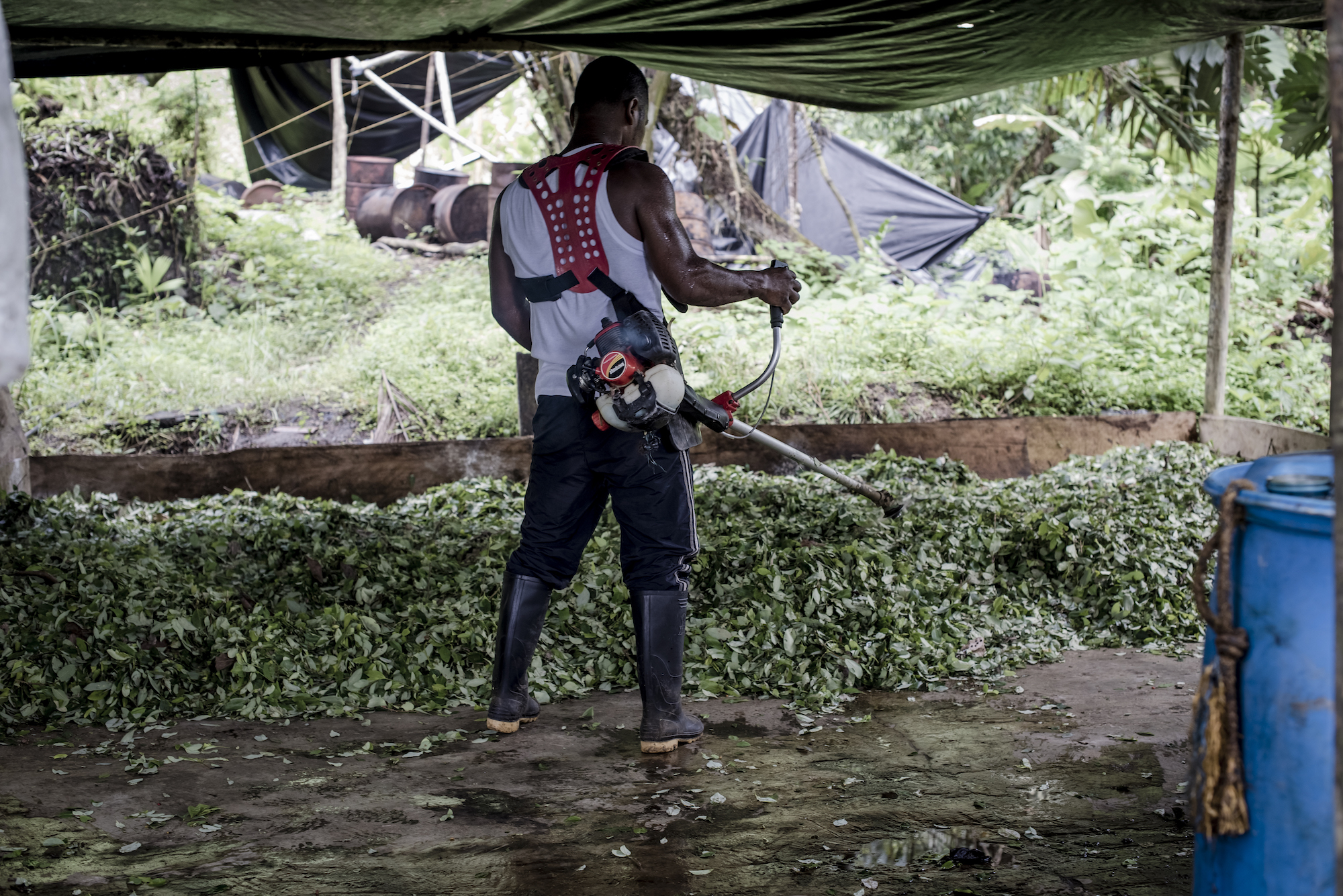 Colombian President Juan Manuel Santos has given farmers who voluntarily sign up a year to comply while the army simultaneously steps up forced eradication of large-scale farms.Coca farmers remain skeptical the government will be able to hold their end of the bargain, and even amid the increased pressure from the government, farmers like Ricardo are hesitant to take the deal. Though he earns just $112 a month farming coca, which puts him well below the poverty line in Colombia, he says he’ll make half that growing other crops. As he watches his young daughter play in the coca leaves, he says his choice is between “poverty and prison.”“For us, the crop is our form of life; it allows us to put food on our tables and meet our needs,” said Orlando Ibarra, the head of the local cooperative of coca farmers in the surrounding province of Nariño. “The cultivation of cocaine isn’t a great thing, it’s just a means of survival.”* * *Resistance to the government’s haphazard eradication efforts has been considerable. In the southern province of Guaviare, a U.N. official was kidnapped in May while attempting to help local farmers substitute crops. After the army moved to forcefully rip up coca in Tumaco, an officer was gunned down in March following a week of steady protests that saw thousands of farmers block roads and torch cars. In mid-April, 11 police officers tasked with eradicating a massive plantation along the border with Ecuador were captured by 1,000 farmers and held overnight. None were injured, but the situation has grown so serious that Nariño’s governor, Camilo Romero, has asked Santos to open direct talks with farmers.
Colombian President Juan Manuel Santos has given farmers who voluntarily sign up a year to comply while the army simultaneously steps up forced eradication of large-scale farms.Coca farmers remain skeptical the government will be able to hold their end of the bargain, and even amid the increased pressure from the government, farmers like Ricardo are hesitant to take the deal. Though he earns just $112 a month farming coca, which puts him well below the poverty line in Colombia, he says he’ll make half that growing other crops. As he watches his young daughter play in the coca leaves, he says his choice is between “poverty and prison.”“For us, the crop is our form of life; it allows us to put food on our tables and meet our needs,” said Orlando Ibarra, the head of the local cooperative of coca farmers in the surrounding province of Nariño. “The cultivation of cocaine isn’t a great thing, it’s just a means of survival.”* * *Resistance to the government’s haphazard eradication efforts has been considerable. In the southern province of Guaviare, a U.N. official was kidnapped in May while attempting to help local farmers substitute crops. After the army moved to forcefully rip up coca in Tumaco, an officer was gunned down in March following a week of steady protests that saw thousands of farmers block roads and torch cars. In mid-April, 11 police officers tasked with eradicating a massive plantation along the border with Ecuador were captured by 1,000 farmers and held overnight. None were injured, but the situation has grown so serious that Nariño’s governor, Camilo Romero, has asked Santos to open direct talks with farmers.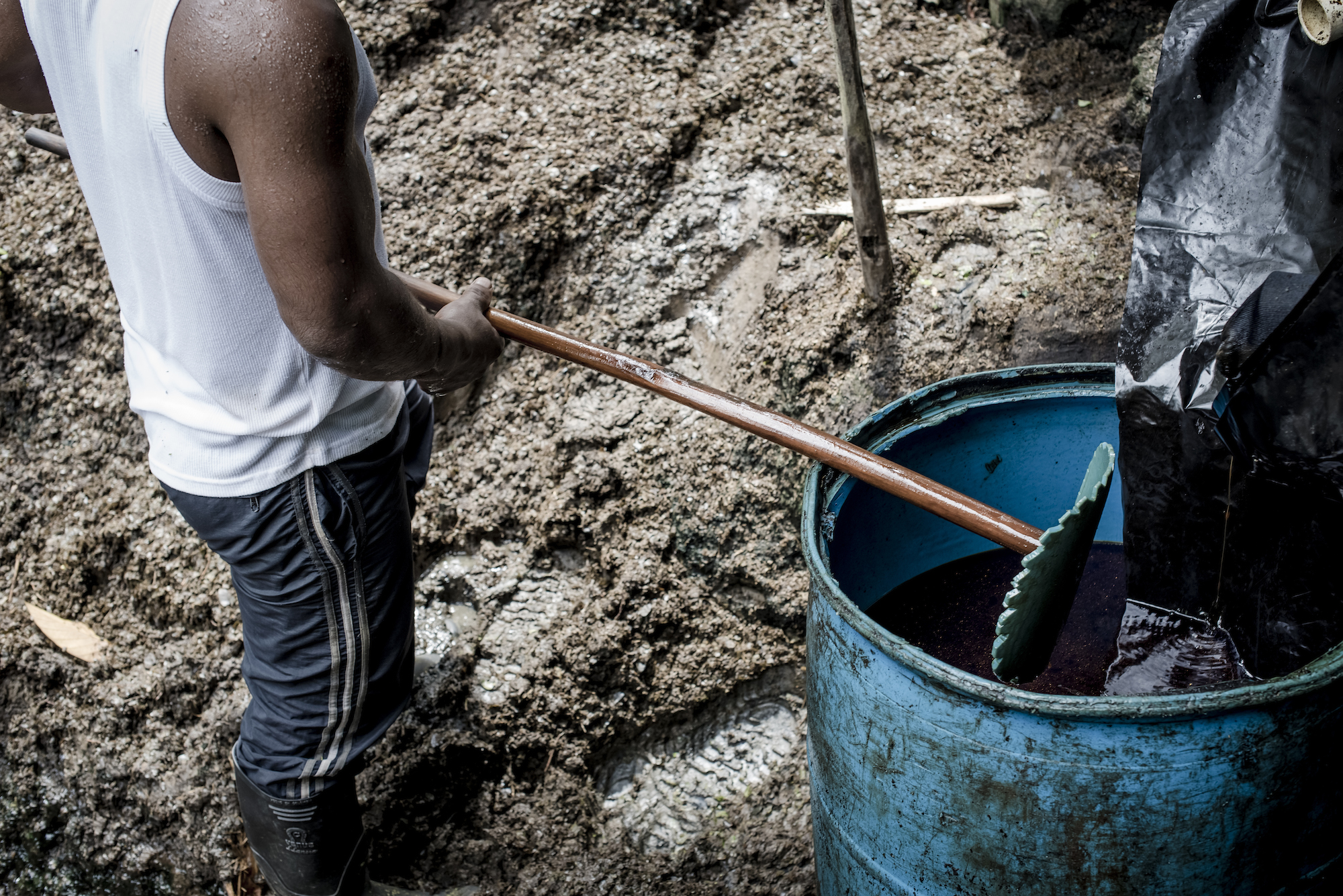 The Colombian government views the elimination of illicit drug activity as a cornerstone of its historic peace accord ending 52 years of civil war with the Fuerzas Armadas Revolucionarias de Colombia (FARC). The deal signed late last year is supposed to disarm the FARC — the group began the first stages of their disarmament this week — and extend basic infrastructure and subsidies to much of the country’s rural people, many of them coca farmers, by establishing a military presence in vast stretches of land formerly controlled by the guerrilla group.Eduardo Díaz Uribe, the director of Colombia’s Agency for the Substitution of Illicit Crops, is responsible for convincing 70,000 cocalero families, an estimated 150,000 people, to give up the coca plant and grow something else.“The problem is not only the persons dedicated to the growth [of] coca, it’s that the economy of these regions, even the legal businesses, are sustained by coca,” Díaz said. “The hotels, the restaurants, transportation, commerce, clothing — coca is the motor. The real challenge is to transform the whole economy surrounding coca.”
The Colombian government views the elimination of illicit drug activity as a cornerstone of its historic peace accord ending 52 years of civil war with the Fuerzas Armadas Revolucionarias de Colombia (FARC). The deal signed late last year is supposed to disarm the FARC — the group began the first stages of their disarmament this week — and extend basic infrastructure and subsidies to much of the country’s rural people, many of them coca farmers, by establishing a military presence in vast stretches of land formerly controlled by the guerrilla group.Eduardo Díaz Uribe, the director of Colombia’s Agency for the Substitution of Illicit Crops, is responsible for convincing 70,000 cocalero families, an estimated 150,000 people, to give up the coca plant and grow something else.“The problem is not only the persons dedicated to the growth [of] coca, it’s that the economy of these regions, even the legal businesses, are sustained by coca,” Díaz said. “The hotels, the restaurants, transportation, commerce, clothing — coca is the motor. The real challenge is to transform the whole economy surrounding coca.”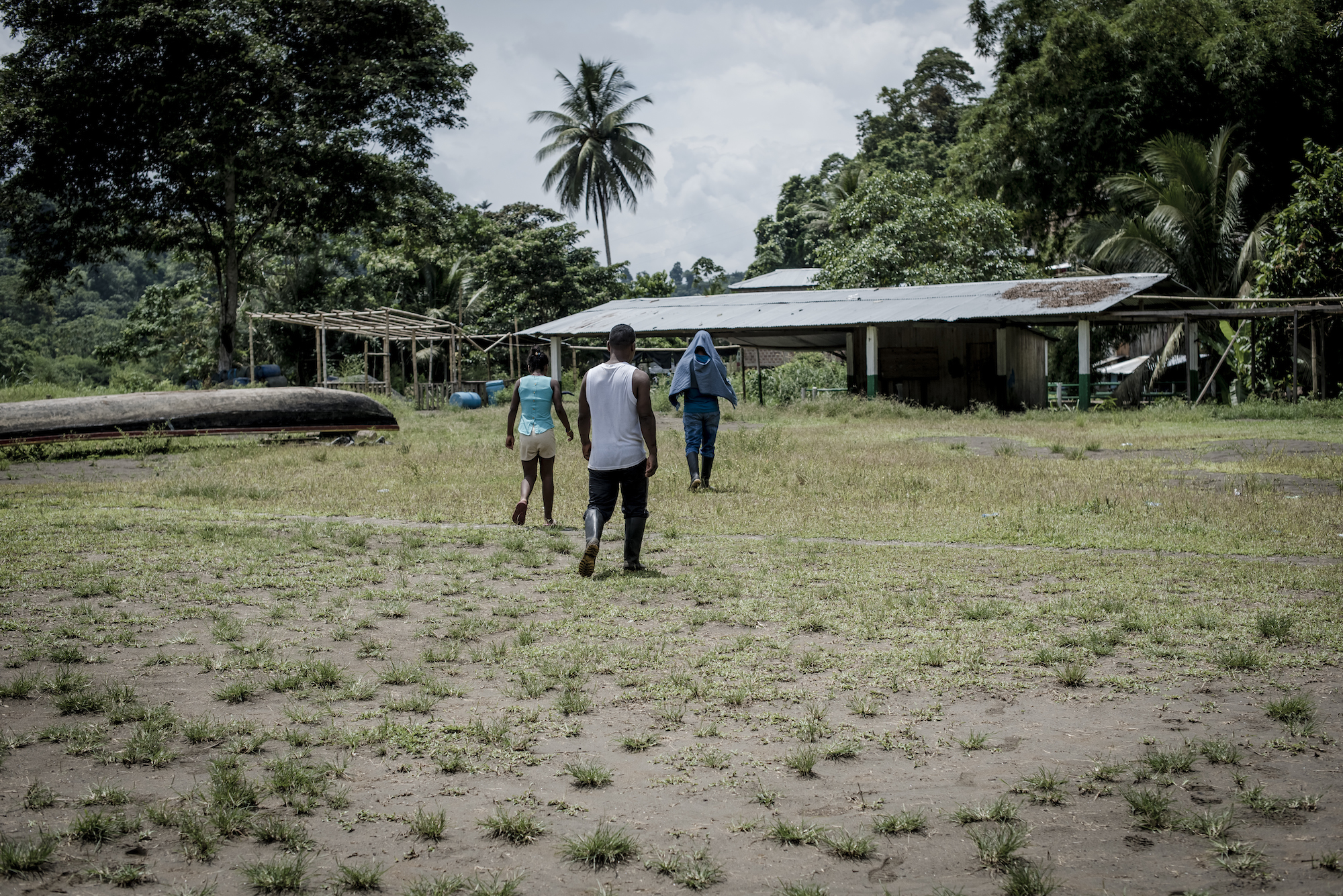 Santos has pledged to destroy 100,000 hectares of coca this year through forced eradication of industrial plantations and voluntary substitution on smaller family farms, and Díaz is hoping lucrative government incentives will help make it happen. In exchange for cooperation, the government has pledged $10,000 to each family over a two-year period, plus technical assistance, a line of credit, protection from narcotraffickers, and badly needed rural infrastructure development to help get produce to markets. In addition to all of that, farmers who demonstrate coca has been removed from their land will be awarded legal rights to the property they tend.Nowhere is the challenge greater than in the city of Tumaco. More than half of all cocaleros live in the surrounding province, where 20 percent of Colombian coca is grown. For decades the region’s navigable rivers, proximity to Ecuador, and shipping routes along the Pacific made it the ideal spot for the coca trade. Production here grew 52 percent between 2015 and 2016.Winning over coca farmers in Tumaco — the sprawling city encompasses much farmland — would be an enormous victory for Diaz and the Colombian government. But the mayor’s office reportedly estimates that 85 percent of the population lives in poverty.Even in areas where coca is less entrenched, paths to prosperity are blocked by institutional challenges as old as the country. Most farmers who sow the land are tenants working for absentee landlords, Díaz said. About 80 percent of land in Colombia is owned by just 14 percent of the population, among the most unequal distributions in the world. In the town we visited, Julio Muelas, a local farmer, said that the roads, bridges, and even the power were built by farmers using money earned from growing coca.
Santos has pledged to destroy 100,000 hectares of coca this year through forced eradication of industrial plantations and voluntary substitution on smaller family farms, and Díaz is hoping lucrative government incentives will help make it happen. In exchange for cooperation, the government has pledged $10,000 to each family over a two-year period, plus technical assistance, a line of credit, protection from narcotraffickers, and badly needed rural infrastructure development to help get produce to markets. In addition to all of that, farmers who demonstrate coca has been removed from their land will be awarded legal rights to the property they tend.Nowhere is the challenge greater than in the city of Tumaco. More than half of all cocaleros live in the surrounding province, where 20 percent of Colombian coca is grown. For decades the region’s navigable rivers, proximity to Ecuador, and shipping routes along the Pacific made it the ideal spot for the coca trade. Production here grew 52 percent between 2015 and 2016.Winning over coca farmers in Tumaco — the sprawling city encompasses much farmland — would be an enormous victory for Diaz and the Colombian government. But the mayor’s office reportedly estimates that 85 percent of the population lives in poverty.Even in areas where coca is less entrenched, paths to prosperity are blocked by institutional challenges as old as the country. Most farmers who sow the land are tenants working for absentee landlords, Díaz said. About 80 percent of land in Colombia is owned by just 14 percent of the population, among the most unequal distributions in the world. In the town we visited, Julio Muelas, a local farmer, said that the roads, bridges, and even the power were built by farmers using money earned from growing coca.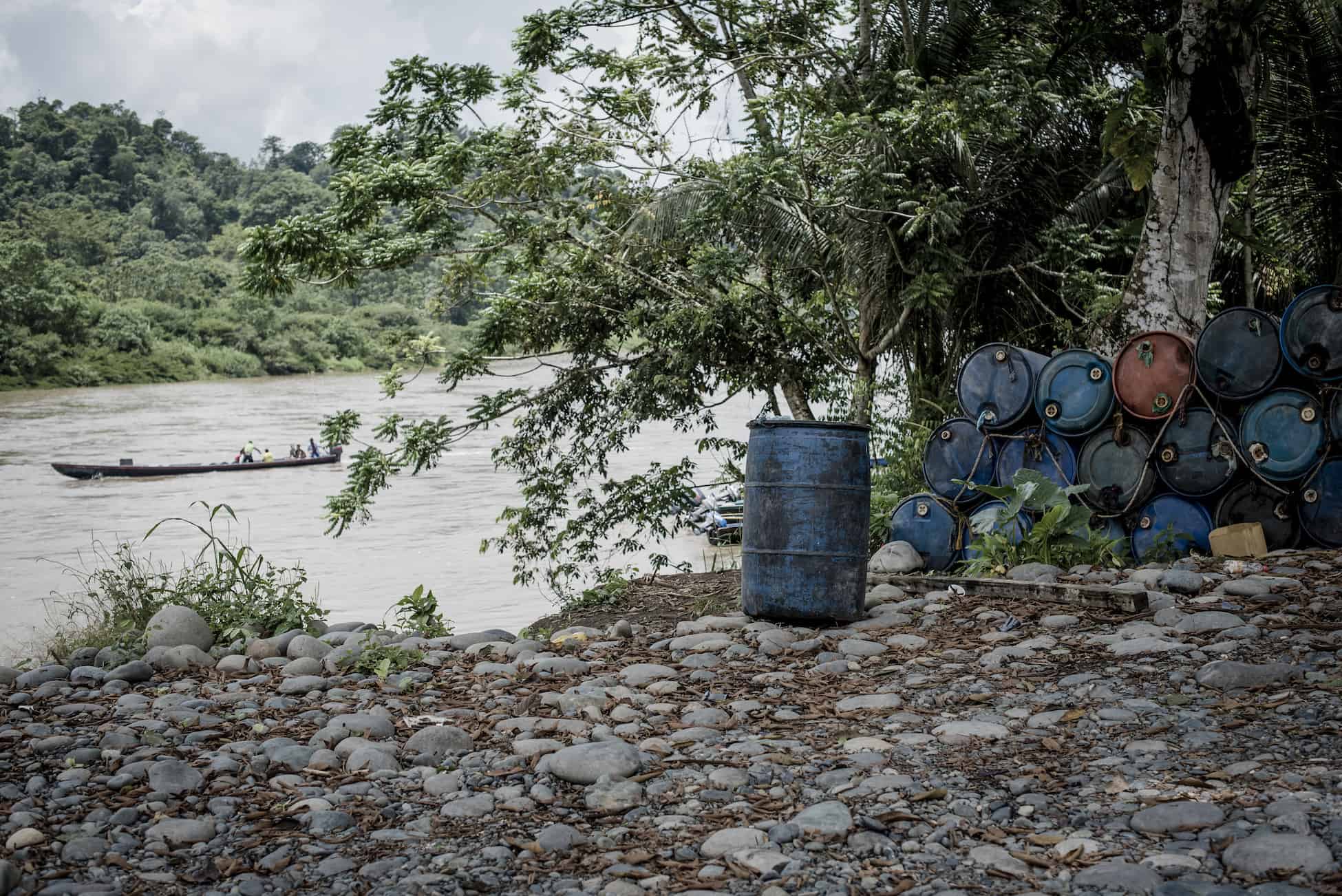 “Tumaco is not simple — it’s a headache,” said Díaz, who experienced the town’s resistance firsthand when local hotels refused to rent him a room during a trip to oversee signing agreements with farmers earlier this year. “Even the priest sees in substitution a risk because he’s getting a tithe from people who live and work even in legal forms of the coca economy.”Under the terms of the ceasefire with the FARC, the Colombian army was supposed to occupy former guerrilla territory, where the majority of coca farmers live. But cartels, gangs, and paramilitaries are now vying for control of the lucrative industry once controlled by the FARC, and in the process they’re trying to win support from the beleaguered farmers. Since peace talks began in 2012, coca production, mostly in guerrilla-controlled areas, has more than tripled.“When the mafias wanted to buy [pastabase], they had to pay the guerrillas,” Díaz said.
“Tumaco is not simple — it’s a headache,” said Díaz, who experienced the town’s resistance firsthand when local hotels refused to rent him a room during a trip to oversee signing agreements with farmers earlier this year. “Even the priest sees in substitution a risk because he’s getting a tithe from people who live and work even in legal forms of the coca economy.”Under the terms of the ceasefire with the FARC, the Colombian army was supposed to occupy former guerrilla territory, where the majority of coca farmers live. But cartels, gangs, and paramilitaries are now vying for control of the lucrative industry once controlled by the FARC, and in the process they’re trying to win support from the beleaguered farmers. Since peace talks began in 2012, coca production, mostly in guerrilla-controlled areas, has more than tripled.“When the mafias wanted to buy [pastabase], they had to pay the guerrillas,” Díaz said.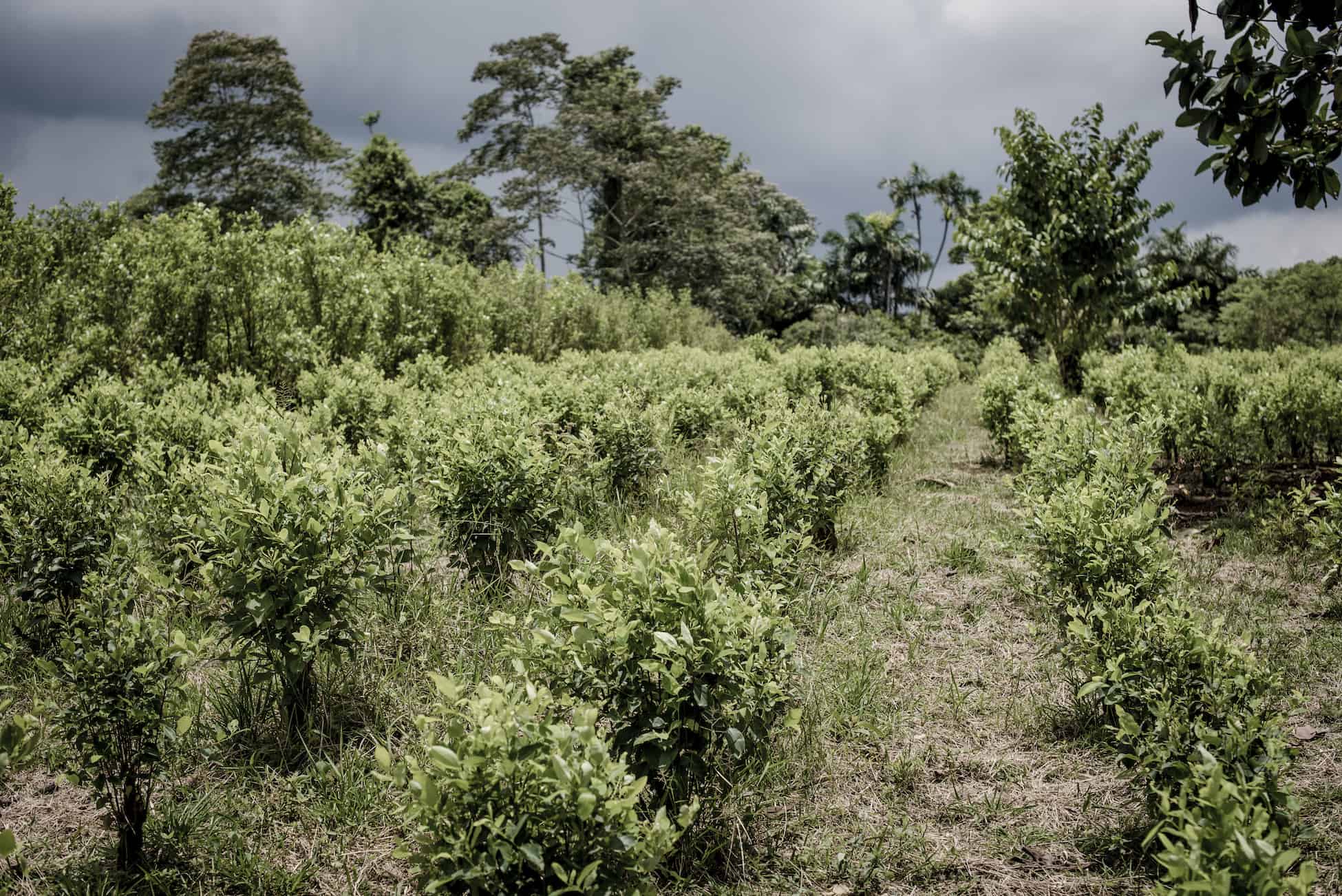 According to the director of anti-narcotics police in Tumaco, cartels are winning over farmers by paying them about $35 for a day’s protest. “I don’t know who the narcotraffickers are,” Ricardo said of the men who buy his pastabase. “And I don’t want to.”But Díaz is holding out hope. He says 70 percent of coca cultivated in off-limits FARC territory is now accessible to the government — in some cases, for the first time in six decades. But the military’s slow occupation of these territories worries him.“The FARC are going back there as a political party, but if we do not take away the coca, and if those territories are occupied by [paramilitary groups], whoever wants to come back will get killed.”* * *Orlando Ibarra was 27 when he started growing coca. He’d previously moved to Nariño as a refugee attempting to escape violence as one of Colombia’s millions of internally displaced people.He tried growing bananas at first, he said, but found shipping the crop to market by boat — the only available transportation — was twice as expensive as the payout. Coffee wasn’t profitable either.“Most farmers who have tried to make progress with their efforts, who’ve tried the better life in country — they die old or tired,” he said.Coca, on the other hand, was stable. The FARC regulated the black market and maintained a low but steady price. Now, with the FARC out of the picture, farmers say narcotraffickers have dropped the price.
According to the director of anti-narcotics police in Tumaco, cartels are winning over farmers by paying them about $35 for a day’s protest. “I don’t know who the narcotraffickers are,” Ricardo said of the men who buy his pastabase. “And I don’t want to.”But Díaz is holding out hope. He says 70 percent of coca cultivated in off-limits FARC territory is now accessible to the government — in some cases, for the first time in six decades. But the military’s slow occupation of these territories worries him.“The FARC are going back there as a political party, but if we do not take away the coca, and if those territories are occupied by [paramilitary groups], whoever wants to come back will get killed.”* * *Orlando Ibarra was 27 when he started growing coca. He’d previously moved to Nariño as a refugee attempting to escape violence as one of Colombia’s millions of internally displaced people.He tried growing bananas at first, he said, but found shipping the crop to market by boat — the only available transportation — was twice as expensive as the payout. Coffee wasn’t profitable either.“Most farmers who have tried to make progress with their efforts, who’ve tried the better life in country — they die old or tired,” he said.Coca, on the other hand, was stable. The FARC regulated the black market and maintained a low but steady price. Now, with the FARC out of the picture, farmers say narcotraffickers have dropped the price.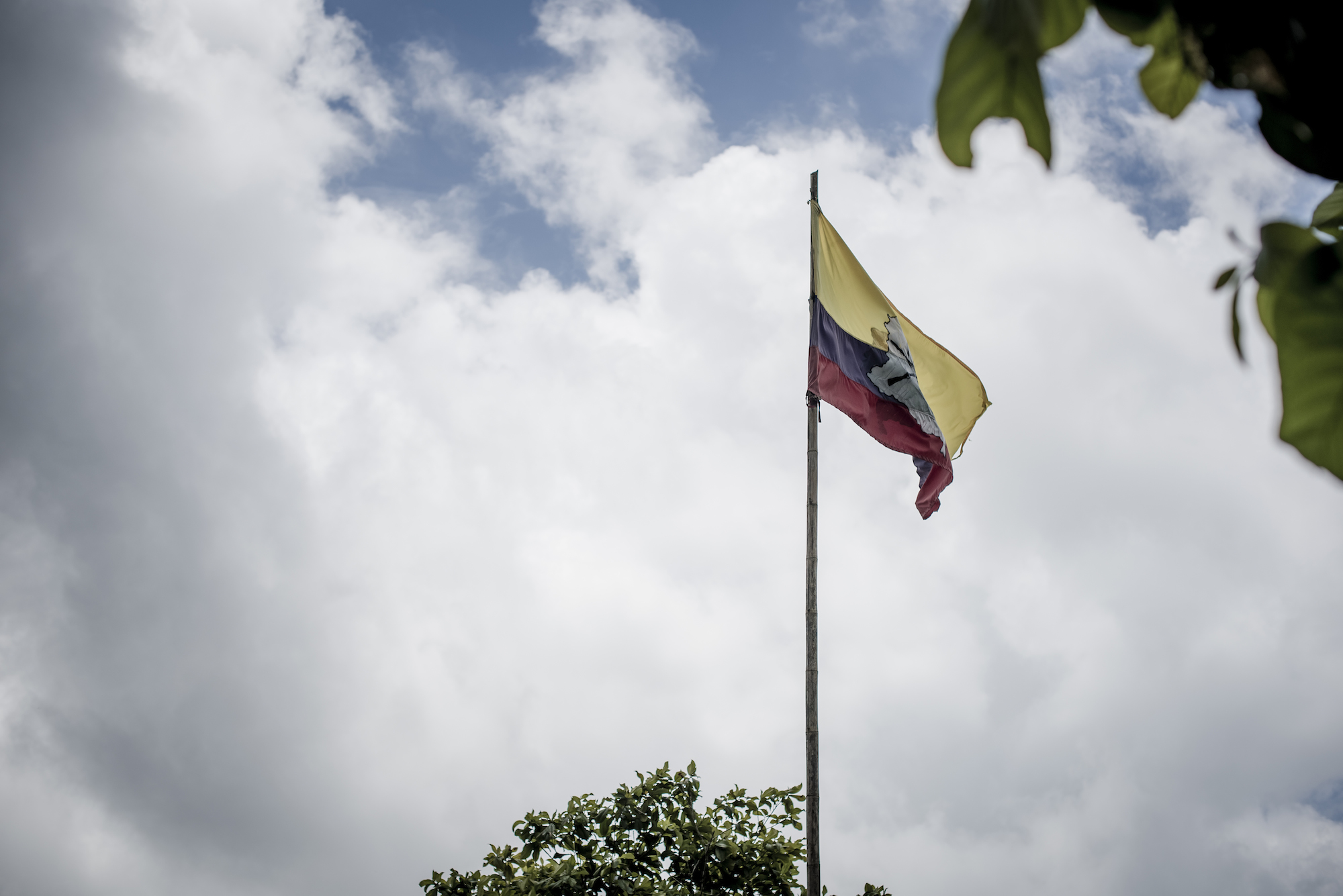 By most estimates, coca farmers earn about 1 percent of the value of cocaine. Ibarra, now the director of a local farmers’ association, estimates he takes home about 500,000 pesos a month — about $176 — based on a price of $350 to $560 per kilogram of pastabase. That kilo, once refined into cocaine, will fetch $24,000 to $27,000 in America.Much of the money he and other farmers earn, he says, is used to build local infrastructure. The town where Ibarra agreed to meet us had one paved road and no sewer system. Power came from generators, and the FARC flag still flew high above. “We have played the role that the state should play,” he said.Julio Muelas, a coca farmer in Tumaco, shared Ibarra’s skepticism of the government’s promises, and said farmers would ultimately need to continue looking after themselves.“What has actually been given to the farmer?” he said. “The FARC may believe the Colombian government, but the farmer does not.”
By most estimates, coca farmers earn about 1 percent of the value of cocaine. Ibarra, now the director of a local farmers’ association, estimates he takes home about 500,000 pesos a month — about $176 — based on a price of $350 to $560 per kilogram of pastabase. That kilo, once refined into cocaine, will fetch $24,000 to $27,000 in America.Much of the money he and other farmers earn, he says, is used to build local infrastructure. The town where Ibarra agreed to meet us had one paved road and no sewer system. Power came from generators, and the FARC flag still flew high above. “We have played the role that the state should play,” he said.Julio Muelas, a coca farmer in Tumaco, shared Ibarra’s skepticism of the government’s promises, and said farmers would ultimately need to continue looking after themselves.“What has actually been given to the farmer?” he said. “The FARC may believe the Colombian government, but the farmer does not.”
Advertisement

Advertisement

Advertisement

Advertisement

Advertisement

Advertisement
